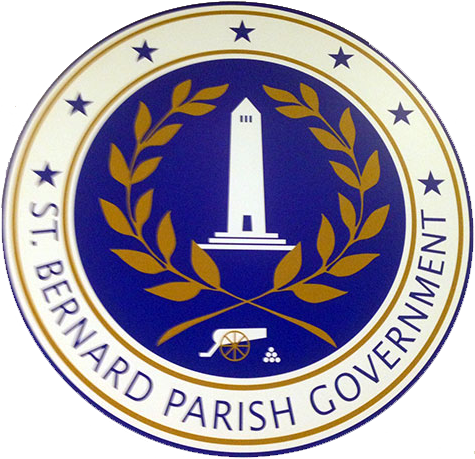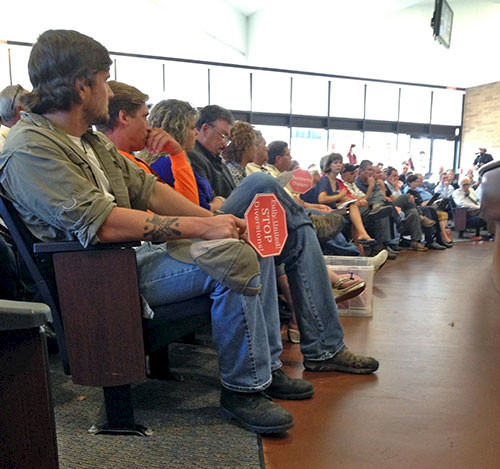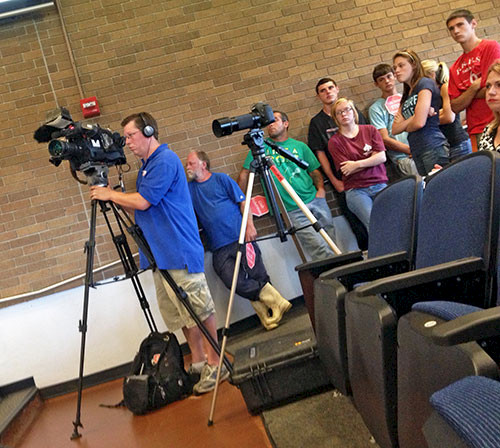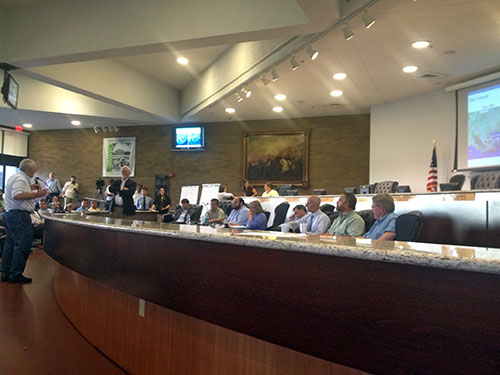Coastal Louisiana issues discussed at public meeting in St. Bernard Parish
Bill Dennison ·On 17 June 2013, I traveled to The Water Institute of the Gulf (TWIG) in Baton Rouge, Louisiana to discuss the development of a Coastal Louisiana report card. The discussion centers around developing indicators of sustainable landscapes and resilient communities for coastal Louisiana. We established a strategy of providing annual coastal updates and biennial report cards ahead of the next Master Plan (2017). As part of my visit, I was invited to observe the public meeting by the Coastal Protection and Restoration Authority (CPRA), a State of Louisiana agency charged with implementation of the 2012 Master Plan.
St. Bernard Parish is named after the Louisiana colonial governor Bernardo de Galvez. It was originally populated by 'Spanish Cajuns', descended from the Canary Islanders in the 1780s. St. Bernard Parish has the Chalmette National Historical Park to denote the location of the Battle of New Orleans. The Battle of New Orleans took place in January 1815 and was the final battle of the War of 1812. The battle occurred during the peace settlement process and was pivotal in maintaining U.S. sovereignty from Great Britain. The American commanding officer was Andrew Jackson, who went on to become the seventh U.S. President.

St. Bernard Parish was ground zero for Hurricane Katrina in 2005, and their fishermen were also affected by the Deep Horizon oil spill in 2010. Even nearly 8 years after Hurricane Katrina, there is evidence of abandoned buildings and ongoing restoration activities that we could see along the drive through New Orleans neighborhoods to St. Bernard Parish, southeast of the French Quarter. The meeting was at the St. Bernard Parish council chambers, and the council was originally called the 'Police Jury'. I observed the residents, resource managers and scientists greeting one another before the meeting with warm handshakes and embraces. But once the meeting started, there were some pointed comments made, often with a lot of emotion. There were several State Policemen at the doors, but they were not called upon.

CPRA assembled a panel to respond to residents concerns about the 2012 Master Plan. This panel included Robert Twilley and Sam Bentley from Louisiana State University, the author/historian John M. Barry, Denise Reed from the Water Institute (TWIG), among others. It was apparent to me that the residents and CPRA were agreed on the problem (land and marsh loss in coastal Louisiana) and the overall solution of restoration by placing sediments in low-lying areas to allow for restoration. What was contentious was the manner of sediment delivery; dredging vs. river diversions. The residents felt that the problem with diverting the Mississippi River to the marshes was not the sediments, but the accompanying freshwater, nutrients and toxicants. They argued passionately for dredging, rather than river diversions. They often referred to the diversion near Caernarvon which did not produce resilient marshes.

Some of the comments were very colorful, delivered with Cajun accents and spirit over a period of 2 hours and 45 minutes. There were commercial fisherman, charter boat captains, business owners, farmers and local elected officials present, often with callused hands and deep tans. Some examples are the following: "I rebuilt after Katrina, but raised my house so that I am 17 feet closer to heaven", "The diversions would leave a trail of tears like the American Indians", "It would a real irony to use BP money to kill the marshes", "If you have oysters, you have a seafood platter, since oysters are a canary species", "We don't want second-hand dirt", "We should be like the U.S. Marines, nobody left behind", "Don't destroy our communities and our cultures with these diversions", "Scientists can send men to the moon and back, but can't seem to be able to build islands".

The panel, and especially Garrett Graves - the chair of CPRA, responded to the comments in a professional and respectful way. They emphasized the process of developing and modifying the Master Plan to maximize the benefits across the entire Louisiana coastline. They also indicated their willingness to continue the dialog and gave assurances that there would be more consultation on any diversions which may occur, but the diversions were some time into the future.
I was struck by the resilience of the St. Bernard community, following such devastating events like hurricanes and oil spills. Their passion and their knowledge about coastal issues was remarkable. They argued for common sense approaches and were very keen to be part of the overall restoration effort. They were appreciative of the CPRA staff and panel for making a trip to St. Bernard's Parish, even though it was well known that it would be a contentious meeting. I envy these resilient people with their seafood riches and intact culture, but I do not envy their vulnerability to coastal flooding and large storms. I am glad that I have been able to assist them in some small way through my role on the Master Plan review and the ongoing report card efforts.
About the author
Bill Dennison

Dr. Bill Dennison is a Professor of Marine Science and Interim President at the University of Maryland Center for Environmental Science (UMCES).